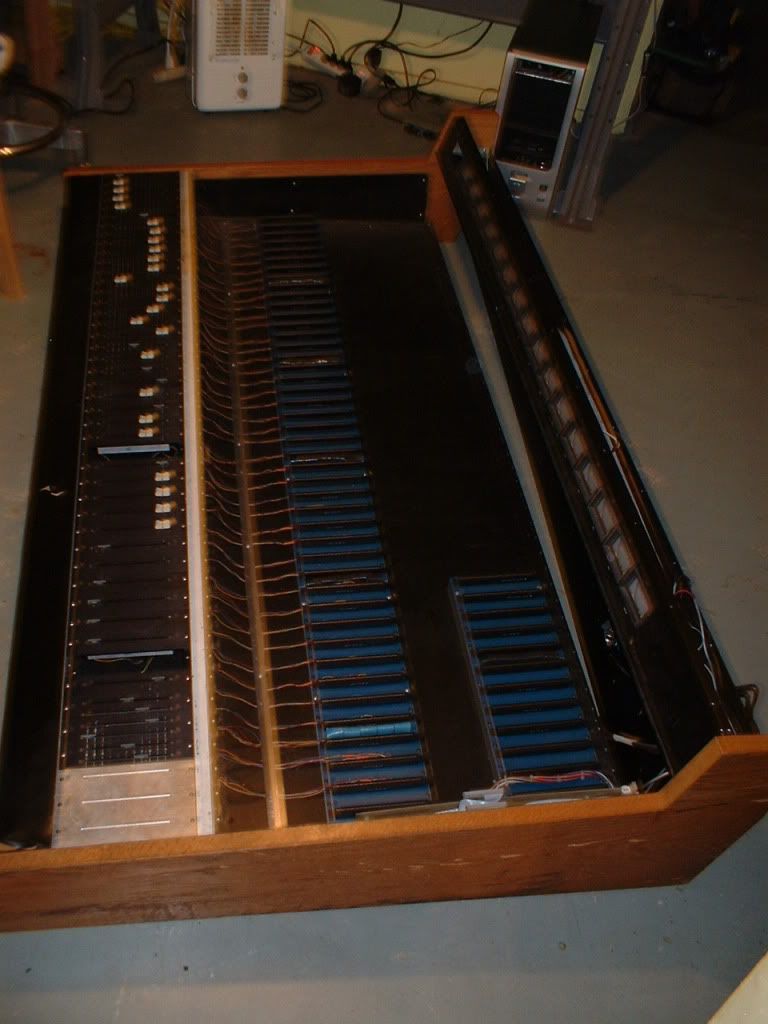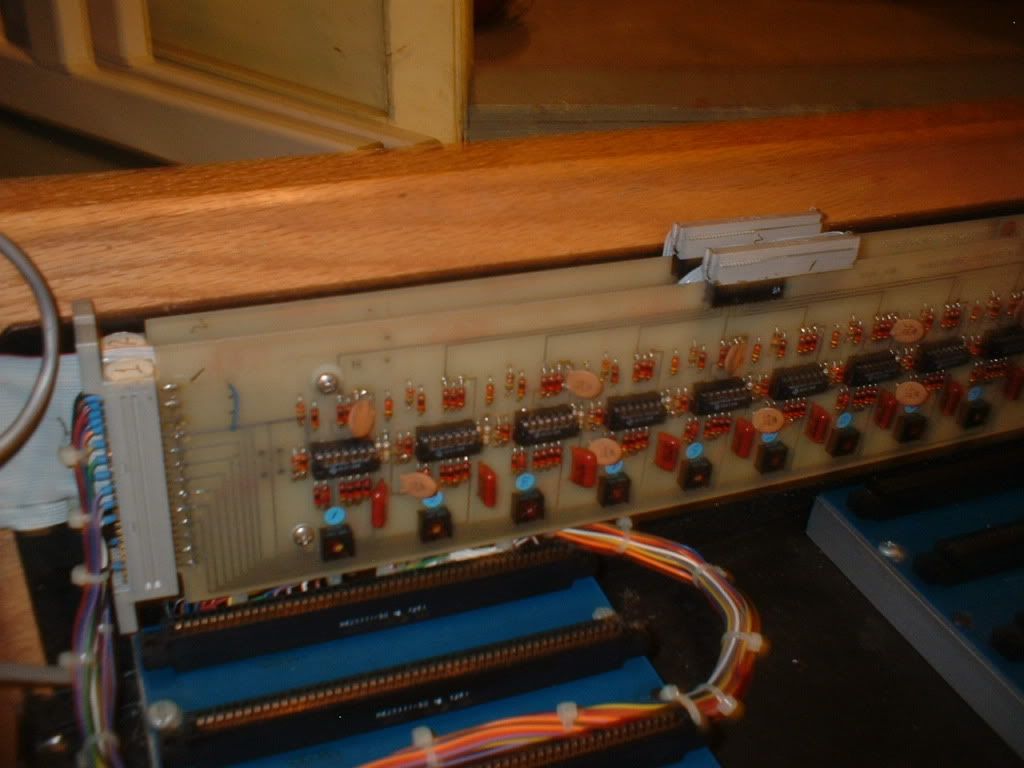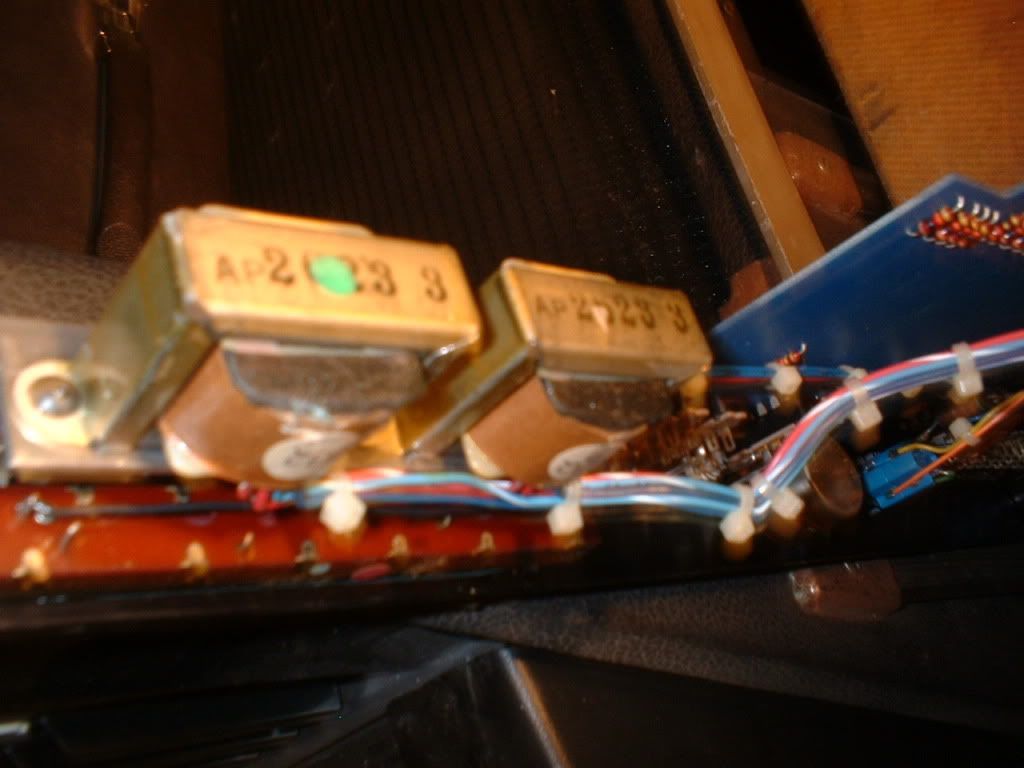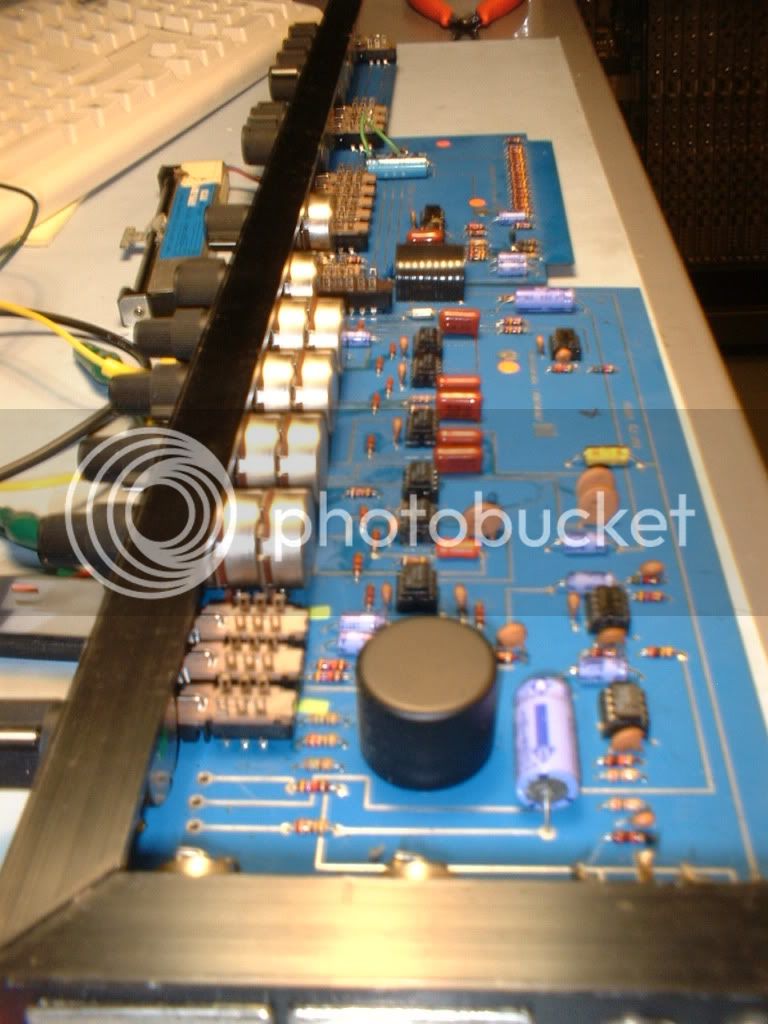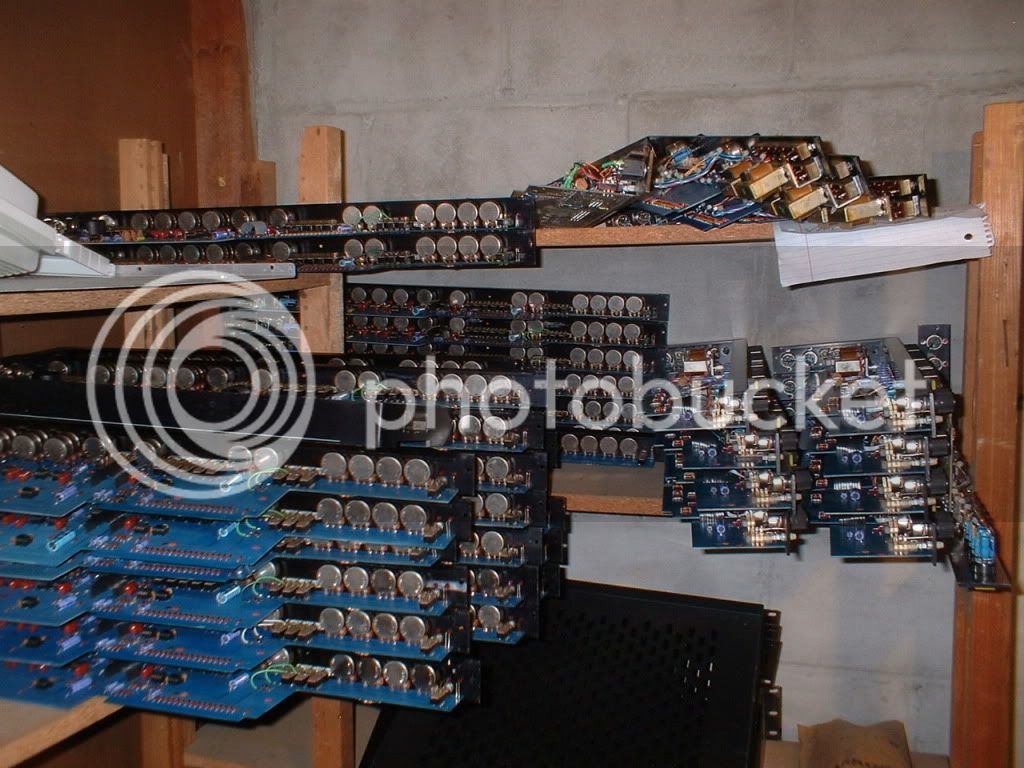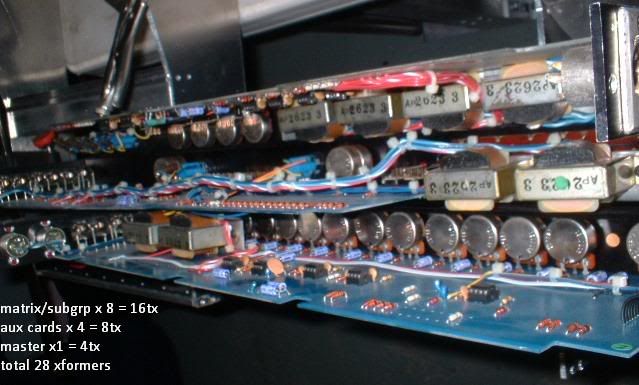Not only that, it was *my* Wheatstone Audioarts LM-80. It was originally installed in a large church in Tacoma, WA by Capitol Communications (ccisolutions.com) back in '82. It was removed by RMS Sound in Seattle, WA and replaced with an Amek, I believe. I purchased it from one of the former owners of RMS Sound (which disintegrated in 1993) in 1998 for $900.
Either on the console itself or on the power supply is the serial number: 10101. That aluminum plate where there should be faders was made by me while I was bored at a job in Redmond, WA in 1999. There's a weird, savage cut on the sidecheek, about an inch tall and half an inch deep, as if someone got pissed off at it with a router table. I can only assume that someone made a cabinet too small or something.
I put the console, as well as a 400-point ADC patchbay, a full cable loom, all interconnects, and all documentation (including some original sales brochures) up on eBay in 2004, having not only gone inside the box, but having gone 5.1 as well. I very carefully listed it as LOCALS ONLY because ye gods who wants to ship such a creature. The first buyer, of course, was a scammer in Malaysia. So I took the Buy It Now price off. The next buyer was some stupid chick in upstate NY. I berated her quite loudly but she spent about $1200 to get the silly thing crated and shipped off. I think I sold it for $1500 or so.
It originally sold for $18k, as I recall. Sony Broadcast for a while was OEMing them; I once found a 40-fader for $32k. No one bought it, of course.
The P&Gs are on disconnects because they were dirty as hell when I bought them and I was going to run them through an ultrasonic cleaner. I never did. It's P&G's recommended cleaning procedure, or was at the time. Your mileage may vary.
Every input and output on the master section was working when it left my care.
Channel 1 is dead. It's dead on the board, not the channel; swapping out channels buys you nothing.
The spare caps for the P&Gs (about five of them were broken, if I recall) are available from Penny and Giles, or were as of 2003. They're 3220DUs, can't remember the parts equivalency. P&G are pretty nice about such things.
Every chip on every channel was removed, cleaned and reseated. Every switch was cleaned with Caig. Some of the crankier ones were cleaned and lubricated with Stabilant. The ones that were at all questionable were replaced (they're easy switches to find) as well as many of the chips; the whole thing is a giant assemblage of TL072s, NE5534s and Jensen transformers...
...which is about all the good you can really say about it, 'cuz the backplane is a disaster. Thing has horrific crosstalk. I did *not* swap out any caps; it was about then that I realized that it wasn't really worth the trouble. I've seen AudioArts channels racked up as if they were Neves but I can't really see it - as gar381 mentioned, the mic pres are teh suck.
Was totally surprised to see the old beast pop up on Google. I put a *lot* of time into it before I learned better. The last time *I* talked to Wheatstone about it, they were delighted - apparently it was the first LM-80 they'd heard about in a long time; they didn't think there were any still extant.
That was seven years ago.
Just dug around on Usenet. Here's the exchange I had on rec.audio.pro in 1997 about this console. I bought it anyway.
Good luck to you.
> I've come across an old, abandoned 32x8 desk that looks like it
>dates from the late '70's or early-mid '80's that is in need of a little
>repair (one channel is out and missing some ICs, the faders would need to
>be re-silkscreened, I'd like to re-upholster the wrist rest) and I want to
>know if it would be a good board to have. Unfortunately, I was about in
>3rd grade in the early-mid '80's and don't know anything about this board.
Audioarts has made some of the most evil sounding consoles I have ever
had to work on; _every_ single one that I have done multitrack work on
has been a real pain to get good sounds out of. Even if you replace
every chip and passive component in the box, you'll still have to
suffer with their amateurish grounding, layout and power supply
techniques. The one thing their consoles are OK for is radio
broadcasting where you only have one or maybe two channels passing a
signal at a time and you don't care much how things sound.
However, if you try to do any form of serious multitrack or production
on their boards, you'll find that your mix will mush up when you use a
majority of the inputs; they send a _lot_ of unbalanced signal current
into ground on each channel strip and use an incredibly minimal signal
grounding system. This causes lots of odd crosstalk and dirt to flow
around the board, some of which is picked up by the mix bus amp,
amplified by 30dB and added to your mix.
Their gain structure is usually quite silly too; a 32x24 Audioarts
that I once had to maintain was shipped with 20dB of makeup gain on
the master stereo fader, which is really silly. And look closely;
they probably aren't P&G faders, the knob just looks the same. The
input channel fader buffer / channel output amps also get pretty
severely loaded due to the excessively low panpot, aux bus and summing
bus resistor values. No 8 pin DIP IC made even today will sound good
into that load.
Further, the left and right stereo mix modules used a different PCB
layout and a different type of IC for the main summing stage... a
TL071 on one side and a 5534 on the other! This is one of the most
critical parts of a mixing console and they completely forgot the most
basic requirement of stereo: make the left and right channels the
same!
The control room pot has very poor stereo tracking because it's an
el-cheapo model that they didn't bother to select; this means your mix
shifts around a lot or you listen at one control room level all the
time. Their EQ can sound pretty evil too. Oh, I forgot: the mike amp
is so crappy that it's not usable for voiceover work; the _talent_
complained!! And when we first installed the board, it hummed all by
itself. After hacking on it, I was finally able to make it quieter
than an analog 1/4" machine, but not by much; there's only so much you
can do with a bad layout.
Audioarts / Wheatsone makes amateurish crap that gets bought because
of looks and price alone, usually by 'suits' who don't have to use the
things. And when you talk to their engineers to see why they did all
these boneheaded things, you realize that nobody's home... Do you
realize now why you have never heard of them before???
If you can get it _really_ cheaply and you don't mind something that
sounds not very good at all and takes up a lot of room, go for it.
It'll impress your friends... as long as you don't listen to it.
Personally, I'd rather have a Mackie 8 bus; they're smaller, sound
better (I'm not the biggest Mackie fan either) and have a nonzero
resale value.
Run away!!!! Better yet, drag it outside, douse it and light it up!


